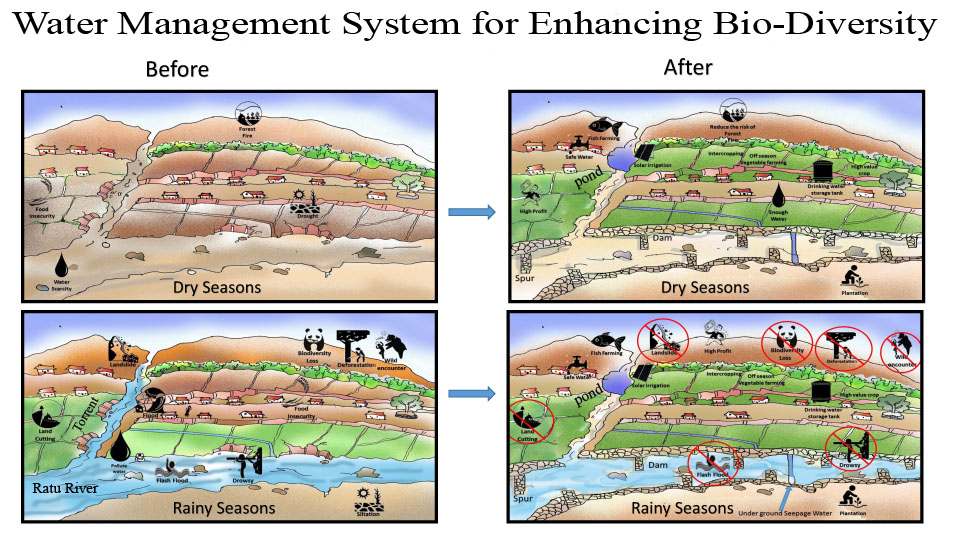An Overview Of Our Solution
- Population Impacted:
- Continent: Asia
Organization type
Population impacted
Size of agricultural area
Production quantity
People employed
Describe your solution
Describe your implementation
External connections
What is the environmental or ecological challenge you are targeting with your solution?
Describe the context in which you are operating
We are operating the scheme of water management for the improvement of livelihood in the Rajbash Village. There is high inhabitation of the Janajati and Dalit. After the application of the scheme there are sufficient amount of water even in the drought for both upland and low land. People had started taking 3 crop (rice-wheat- maize) in the low lands ensuring the food security whereas vegetables and high valued crops in uplands. People had integrated the concept of the home garden in the upland to ensure the nutrition's. Previously they used to buy the vegetable now they are selling them. People are earning from fish farming, 3 crops in a year and from high value crops and vegetables Landless people are benefited by the fish farming in the community pond and being involved as agriculture labor. Villagers are well known to the scheme as they were involve in the program which will create sustainability of the structure. And different bio-engineering measure are integrated to increase the strength of the structure. Previously there there was an average income of NRs. 5000/-per hectare which has been increase with three crops by NRs.120000/- per hectare.
How did you impact natural resource use and greenhouse gas emissions?
Language(s)
Social/Community
Water
Food Security/Nutrition
Economic/Sustainable Development
Climate
Sustainability
Yes this is a collaborative approach of different funding agencies ( LIBIRD, Village Development Committee, CARITAS- Germany, Caritas-Nepal) and people participation. It is one time investment and local people can take care of it. People can collect the money for its enhancement and renovation. Regarding the sustainability , it uses the solar energy for uplifting the collected water which is itself a sustainable energy. Regarding the sustainability of the structure, the user group committee keep on collecting the levy and keep on extending the canal and renovation. So we can say it as it is a sustainable approach after once it is installed.
Return on investment
Entrant Image
Entrant Banner Image
